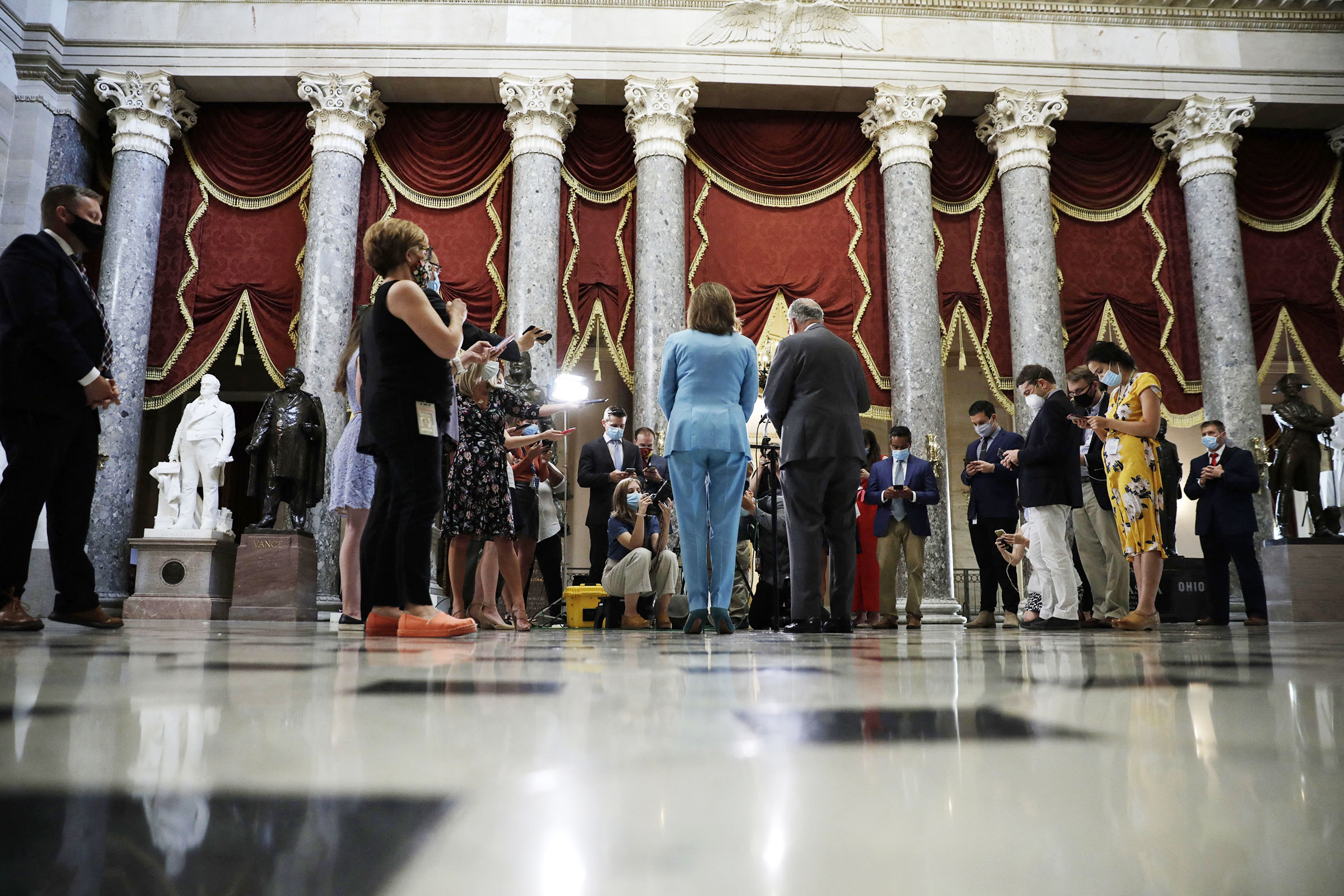
This article is part of the The DC Brief, TIME’s politics newsletter. Sign up here to get stories like this sent to your inbox every weekday.
With lawmakers yet again scheming how to keep the lights on, there’s a lot of wiggle room in what is considered a “clean” extension these days in Washington. They are ready to kick the can down the road and keep the status quo until they have the bandwidth for a proper fight. Where there is no space for ambiguity? The cold fact that the government’s funding mechanism expires on Sept. 30.
Negotiations between House Speaker Nancy Pelosi and Treasury Secretary Steve Mnuchin are focused on a so-called “clean” spending bill. Neither side has defined just what “clean” means, how long that measure will last or if there’s any room in it for some pandemic bailout bucks. There’s a wide acceptance that they don’t want to load this spending bill up with extraneous add-ons, but can they strip it down to its bare essentials and settle on a date when they rejoin the fight post-election?
The first question could be as simple as keeping spending at the current level to get through the November election. The second question may be one that causes the most heartburn. And where Congress and the Trump Administration come down on it may be one unavoidable way they tip their hand on where they think this election is headed.
Democrats facing tough re-elections in just 48 days are pushing for more coronavirus relief, either as part of this funding package or through a fast-moving stand-alone bill. Much of the earlier relief packages either expired in August or ran out of money sooner, and incumbents in swing districts need more than “We’re trying” as a message heading into voting, which begins Friday in some states. A bipartisan compromise plan for pandemic relief is currently floating around the Capitol from the self-described Problem Solvers Caucus. That plan would spend as much as $2 trillion to help small businesses, to send checks to American workers and to boost unemployment payments.
Top Democrats have rejected the compromise because it leaves out some of their priorities, such as cash for state and local governments and money for election integrity. Pelosi, however, says she’ll keep her Democratic members in Washington working on a relief package until they find a solution — good news for out-of-work Americans but trickier for House lawmakers from both parties who are all on the ballot this year. Republicans by and large don’t want to take up anything before Election Day, especially if it runs afoul of Trump. The President, for his part, said in a tweet today that Republicans should “go for the much higher numbers.” If it were linked to a bill to avoid a government shutdown, that might make things easier.
In the interim, Democrats are trying to set any movement on a timeline that would push the next debate on spending levels into January of next year, when former Vice President Joe Biden could be taking the oath of office. A blank slate, sans Trump, looks awfully appealing for Democrats assured that they’ll be back here next year.
Republicans, on the other hand, are looking at revisiting the spending bill during what is traditionally called the lame-duck session, when lawmakers — or presidents — who are leaving office are given one last window to make laws. Sen. Richard Shelby, chairman of the all-powerful Appropriations Committee, told reporters on Capitol Hill yesterday that they are looking at “December 18th, middle of December, something like that.”
Few in the President’s own party will say it, but that schedule would give Trump one last chance to put his thumbprint on Washington should he lose in November. It would also potentially limit Biden’s options should he win. Setting the schedule in such a way is both crafty and, well, a little defeatist.
House Majority Leader Steny Hoyer, the Democrat who nominally controls the floor schedule, told colleagues yesterday that they should expect to be voting on funding next Tuesday. But there is still no resolution on what that bill will look like or its duration. Luckily, Congress has gotten extremely good at these temporary fixes and, barring any surprises from intransigent lawmakers or presidents, can move quickly to patch the funding leak. That says more about Washington’s lurch from one crisis of its own making to the next than any of the legislators’ ability to do big things.
But there are still deadlines. The Bipartisan Policy Center reports that, even with some creative accounting practices and shell-game transfers, the U.S. will hit its spending wall between Oct. 18 and Nov. 5 — right in the heart of the election season and while most states will be already voting. A crisis is afoot, but an ability to kick the can isn’t far from frame.
Make sense of what matters in Washington. Sign up for the daily D.C. Brief newsletter.
More Must-Reads From TIME
- The 100 Most Influential People of 2024
- Coco Gauff Is Playing for Herself Now
- Scenes From Pro-Palestinian Encampments Across U.S. Universities
- 6 Compliments That Land Every Time
- If You're Dating Right Now , You're Brave: Column
- The AI That Could Heal a Divided Internet
- Fallout Is a Brilliant Model for the Future of Video Game Adaptations
- Want Weekly Recs on What to Watch, Read, and More? Sign Up for Worth Your Time
Write to Philip Elliott at philip.elliott@time.com